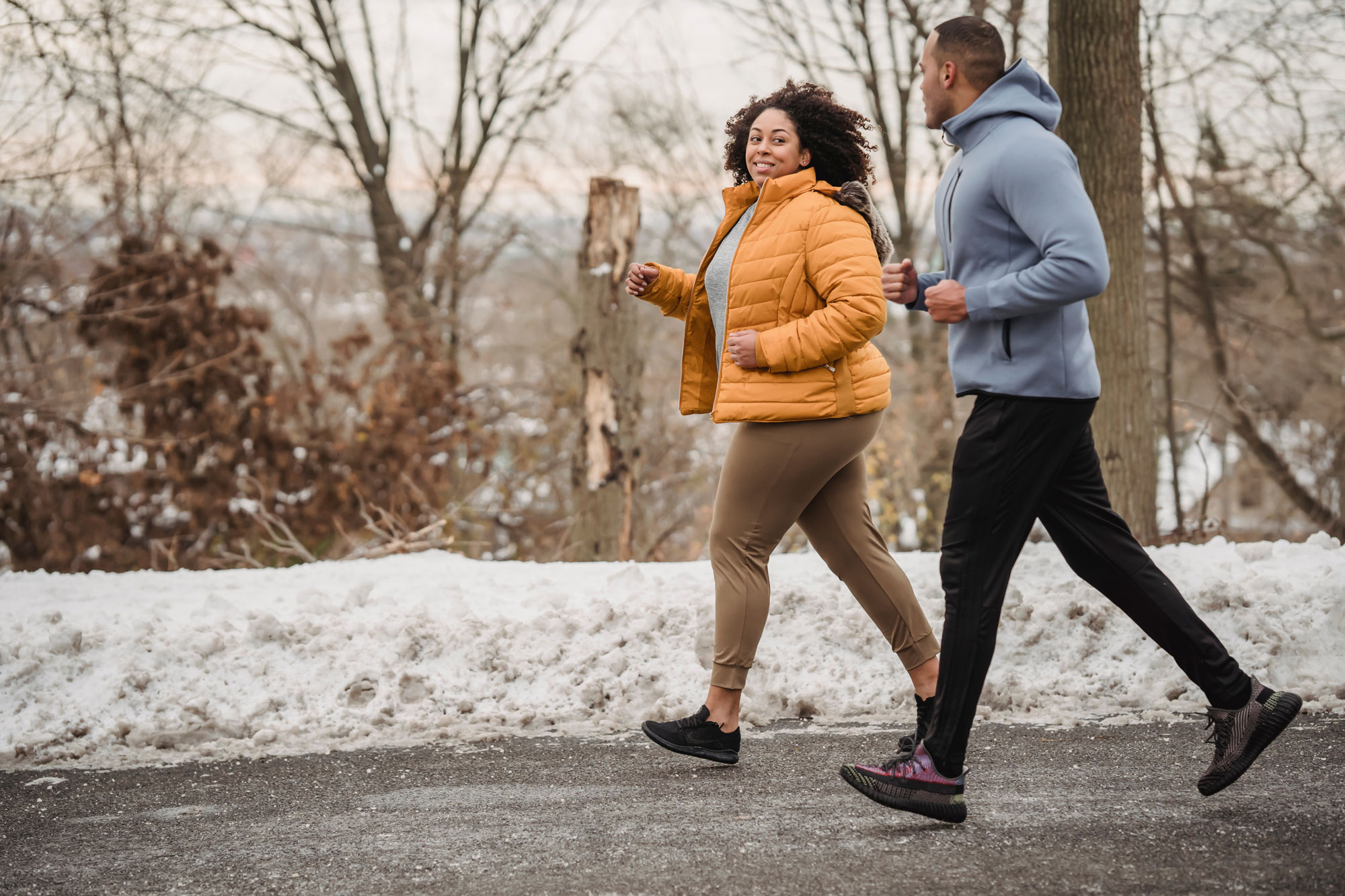Pilot study indicates couples may benefit from shared workouts
by Amy Blakely
To live happily ever after, couples may vow to support each other through better or worse, richer or poorer, sickness and health. However, based on a pilot study done at UT, those who exercise together may live healthier ever after.
Lyndsey Hornbuckle, associate professor of exercise physiology, was the lead author of a pilot study that showed romantic partners may help each other adhere to fitness programs. UT faculty coauthors were Amy Rauer, a professor in the Department of Child and Family Studies, and Cary Springer, a statistical consultant from research computing support in the Office of Innovative Technologies.
“Testing new strategies designed to promote and maintain exercise habits is critical,” Hornbuckle says. To her knowledge, it is the first pilot study of a couples-based exercise intervention in African American adults.
Exploring Health Disparities
Hornbuckle has focused the bulk of her research on health disparities in underserved groups, looking for ways to encourage healthy lifestyles that include physical activity. Much of her work has centered on African Americans. Studies show that African Americans have higher rates of inactivity, obesity, and cardiometabolic risk compared to other races or ethnicities. The reasons, Hornbuckle said, are multifaceted and often stem from systemic inequalities. Factors that contribute to health disparities can range from income and inadequate insurance to lack of access to good health care to geography. Bias, discrimination, and privilege are factors too.
While everyone has some form of privilege or advantages in their daily life, individuals don’t often think about it in terms of some of the obstacles that others face.
For instance, able-bodied people may not realize how difficult it is for wheelchair-bound people to maneuver the local gym. White people may not give a second thought to going for a jog on a public street—or fear that their cell phone might be mistaken for a gun.
“But I think about what I wear when I go out for a run,” Hornbuckle says. “If you don’t make yourself look like you belong, you might get stopped.” Over time, these types of limitations can negatively affect health and health-related behaviors, and that can contribute to health disparities.
The Couples Study
While research about African American women’s exercise habits is growing, studies of men’s habits are sparse.
“Men are reluctant to sign up for research in general, especially African American men,” Hornbuckle says. “I started thinking, what and who would get them to participate?”
The answer to “who” seemed obvious: “Their wives or their partners would.”
At the same time, Hornbuckle wanted to find a way to encourage women to do weight training, which is very beneficial for women as they age.
“Middle-age or older women may or may not ever have participated in resistance training,” Hornbuckle says. “I thought they might feel comfortable if they had their partner with them.”
All of that led Hornbuckle to two questions: Does having an active partner make a significant difference on a person’s activity? And would couples do better if they exercise together or separately?
To gain insight, Hornbuckle designed “Better Together? A Pilot Study of Romantic Partner Influence on Exercise Adherence and Cardiometabolic Risk in African American Couples.”
She worked with 14 African American romantic couples whose mean age was 62. Prior to the study, the participants underwent key health screenings, including blood pressure, body composition, waist and hip circumference, cholesterol levels, and blood sugar levels. For 12 weeks, the couples were asked to walk at least 30 minutes per day, three days a week, and participate in resistance training twice a week. Half of the couples exercised together, and half exercised separately.
Participants wore fitness trackers and completed the walking anywhere they wanted. Resistance training took place in Hornbuckle’s UT laboratory gym with a trainer.
While many of the couples struggled to complete 90 minutes of walking per week, the group that exercised together walked more (a mean of 86.5 minutes per week) than the group that walked separately (a mean of 66 minutes per week).
Although additional research is needed, the results indicate joint workouts helped the couples achieve their exercise goals, Hornbuckle says.
All the couples adhered very well to the prescribed resistance training.
“This is not particularly surprising given the accountability provided by the exercise trainers,” Hornbuckle says. Still, it “does speak to the acceptance and feasibility of resistance training as an exercise modality in this population.”
And there were health benefits: Overall, participants gained upper and lower body strength, trimmed their waists, lowered their total fat mass, reduced hip and thigh fat, and decreased their long-term blood sugar measures.
Next Steps
Hornbuckle says she and her colleagues are planning a follow-up study that aims to increase the number of participants and expand the definition of “couple” to be more inclusive. The goal remains the same: address health disparities by devising fitness regimens for specific groups, like older adults and African Americans.
“I want to develop and implement exercise programs that are scalable and sustainable,” Hornbuckle says.

